
Gigabyte GA-X99-Designare EX Review
Manufacturer: GigabyteUK price (as reviewed): £382.98 (inc VAT)
US price (as reviewed): $418.99 (ex Tax)
It's always interesting to see what motherboard manufacturers get up to at the ultra-premium end of things. Asus has recently launched a new Rampage X99 board plus it has a revamped X99 Deluxe (II), MSI has its new Godlike boards and Gigabyte has one of the biggest X99 board ranges of all with its G1 Gaming, Overclocking and Ultra Durable series all sporting some drool-worthy items for the X99 platform.
Today we're looking at one of the most eye-popping boards in its Ultra Durable series - the GA-X99-Designare EX, which retails for a not insignificant £383. This is twice the price of some of the cheaper X99 boards we've looked at, but with a solid effort elsewhere in its X99 catalogue seeing Gigabyte get awards for its GA-X99-UD4P, X99-Gaming 5P and the excellent X99M-Gaming 5, we were hoping for big things from this flagship motherboard.
It's fairly unassuming to look at, with a slightly racey-looking PCB clad in metal and plastic shrouds that hide numerous banks of RGB LEDs that can be controlled using Windows-based software. However, those blue sections might look a little out of place depending which colour you go for - one reason why Asus has either not committed to any colour at all or included replacement heatsink fascias allowing you a modicum of colour matching ability.
Click to enlarge
On closer inspection, though, it's clear to see where some of the money has gone with the GA-X99-Designare EX. You get not one but two U.2 ports plus a pair of M.2 ports, but one can only be used for short modules such as WiFi cards - one of which, in the form of Intel's dual-band Wireless-AC 8260, is included along with a magnetic desktop antenna. Things are certainly hotting up in the storage field too and we can't help but think U.2 is lagging a bit behind M.2 at the moment, what with the likes of the Samsung SSD 950 Pro, SM961 and PM961 either available now or in the not too distant future.
Click to enlarge
Still, if you're spending this much on a motherboard you like want to have both options available. There's plenty more here too. Gigabyte claims to be able to offer 3-way GPU setups the full x16/x16/x16 lane configuration with 40-lane CPUs and this is thanks to a PEX 8747 PCI-Express switch. This also allows one of the U.2 ports to always be available whatever GPU setup you opt for, although using the M.2 port will see the third 16x PCI-E slot drop to x8 speed - only an issue if you're using high-end graphics cards in a 3-way setup, and even then unlikely to be a real bottleneck. In short, even in a 2-way SLI or CrossFire configuration, so long as you use a 40-lane CPU, you can still run both the cards at full x16/x16 speed and use M.2 and U.2 SSDs without anything sharing bandwidth.
Click to enlarge
As well as Intel-powered USB 3.1 Type-A and Type-C ports, there's also a DisplayPort header on the I/O panel. This isn't a video output, though - instead it will be one way of dishing out Thunderbolt 3 when the board is Intel-certified. The two primary 16x PCI-E slots are double spaced to aid cooling of air-cooled GPUs, although to slot in a third you'll likely need to water-cool it as dual-slot coolers will essentially see zero clearance between the second and third cards otherwise. The layout is generally excellent, although things can get a bit cramped due to so much being included on the PCB. In addition, the M.2 port is hidden under a metal shroud which itself is covered by graphics cards in the primary 16x PCI-E slot - getting at it would be awkward if your system were water-cooled and we'd maybe prefer the slot to be in the open to aid airflow and help prevent SSDs from throttling.
Click to enlarge
Aesthetically, the board is attractive with plenty of steel rather than plastic being used for fascias and PCI-E slot covers as well as on the DIMM slots. Even without the LED lighting, it has plenty of pizazz, yet there's ample space around the CPU socket too and unlike some of MSI and Asus's recent efforts, there's no mid-board heatsink hampering removal of the primary graphics card either. Switching to the I/O panel, you can clearly see the DisplayPort, ready and waiting for some Thunderbolt action if that's your thing, but there are also a pair of Intel LAN ports. The only thing that's lacking are USB ports - the six here may see the board come up short if you have printers, external hard disks and the like to deal with.
Click to enlarge
One big omission that we didn't expect at this price are the usual overclocking and testing tools. There's no LED POST code display nor power or reset buttons, which is a shame. The RGB LED lighting is extensive and well thought out though, being hidden under the various shrouds to not look too garish. However, it took a while to tune the colours to be accurate according to the software and sometimes they looked a few shades lighter or darker. The lighting was perhaps a little easier to tweak and more accurate on the Asus X99 Strix Gaming, for example.
Click to enlarge
Specifications
- Chipset Intel X99
- Form factor ATX
- CPU support Intel Socket 2011-v3 (Broadwell-E,Haswell-E, Xeon)
- Memory support Quad-channel, 8 slots, max 128GB
- Sound 8-channel Realtek ALC1150
- Networking 2 x Intel Gigabit LAN, Intel 8260NGW 802.11ac Wi-Fi, Bluetooth 4.2
- Ports 10 x SATA 6Gbps (X99), 2 x SATA Express 10Gbps, 1 x M.2, 2 x U.2 (PCI-E 3.0 x4), 9 x USB 3.0 (4 x via header), 1 x USB 3.1 Type-A, 1 x USB 3.1 Type-C, 4 x USB 2.0 (4 x via header), DisplayPort (future Thunderbolt 3 support), 2 x LAN, 3 x surround audio out, line in, mic
- Dimensions (mm) 305 x 244
- Extras Magnetic Wi-Fi aerial, RGB LED strip 4-pin extension cable, DisplayPort cable, 2-way and 3-way SLI connectors, sleeved SATA cables

MSI MPG Velox 100R Chassis Review
October 14 2021 | 15:04

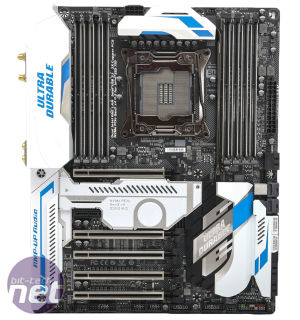

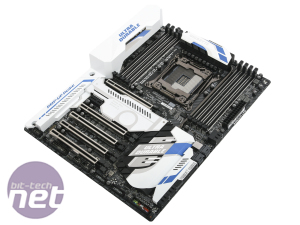

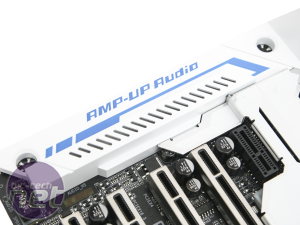
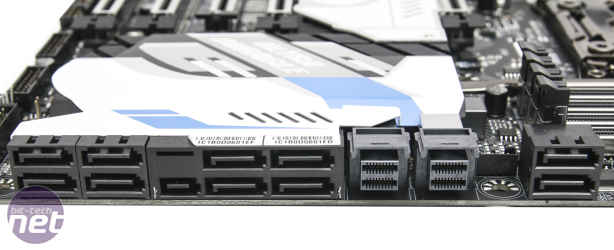
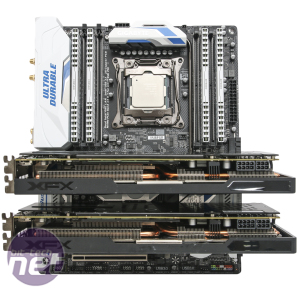
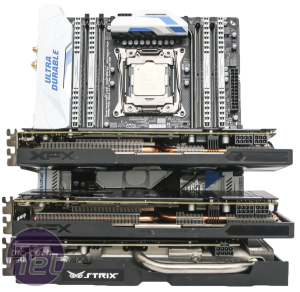
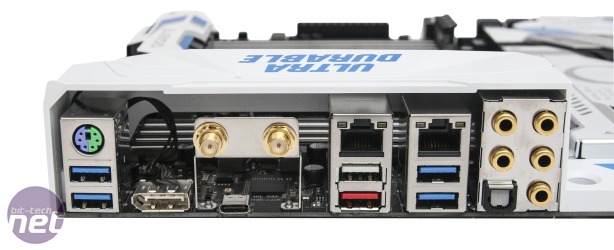








Want to comment? Please log in.